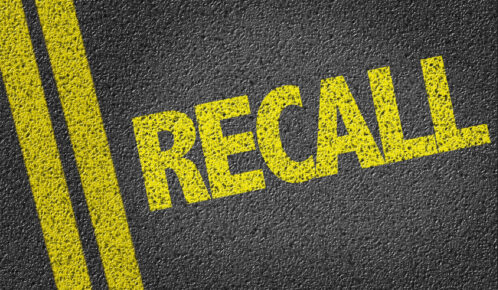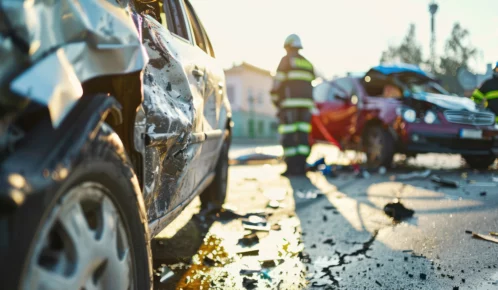The Illinois Supreme Court unanimously ruled on December 14, 2023, that Chicago carries no liability for bicycle accidents caused by potholes on a non-bicycle route or lane. The ruling also reaffirmed that cyclists are primarily “permitted” users of roadways lacking designated bike lanes or signage. They only become “intended” users when a roadway has a bike lane or signage.
Table of Contents

Bike Accident Statistics in Illinois
A 2018 crash report shows that about 3115 bicyclists got injured in accidents in Illinois. It also shows that the state recorded 19 bicyclist fatalities. Most of the bicyclist injuries and fatalities reported in Illinois happened in the greater Chicago region. In fact, a bicyclist was involved in a fatal crash almost every third day in the region.
People walking or cycling are at a higher risk of getting injured or killed in an accident. The Chicago Department of Transportation (CDOT) reports that cyclists are five times more at risk of getting killed or injured in an accident than those in motor vehicles.
The Chicago Metropolitan Agency for Planning (CMAP) reports that 72% of fatal crashes in Chicago, Illinois, stem from risky driving behaviors. These behaviors include speeding, cell phone use behind the wheel, driving while impaired, not giving right of way, and ignoring traffic signs and signals.
A personal injury lawyer can explain your rights and legal options if you have sustained injuries in a bicycle accident caused by another party’s or entity’s negligence. The lawyer can help you secure financial recovery from the negligent party or entity.
Cyclist Files a Personal Injury Lawsuit Against Chicago
Court records indicate a cyclist struck a pothole in a crosswalk while cycling on the North Side of Chicago in June 2019. The impact threw the cyclist off the bicycle, leading to cracked teeth, facial cuts, and other bodily injuries.
The cyclist filed a personal injury case against the city in the Cook County Circuit Court four months later. The lawsuit alleged that the city failed in its duty to keep the crosswalk in good condition, which led to the pothole that caused his accident and injuries.
The judge agreed with the city’s argument that the law did not recognize the cyclist as an “intended user” of the road, and granted the motion to dismiss the plaintiff’s suit. The judge said the city had no legal duty to prevent the plaintiff’s injuries.
An Illinois appellate court, however, reversed that decision in May 2022, giving the plaintiff a new chance to hold the city legally and financially accountable for his injuries. The appellate court argued that the presence of Divvy bike rental stations implied that the city intended cyclists to use streets in the city. It also argued that codes prohibiting riding on sidewalks meant cyclists could only use the road on that street.
The Illinois Supreme Court Decision
The Illinois Supreme Court overturned the appellate court’s ruling. It concentrated on the absence of signage or markings designating the road where the plaintiff got injured for bicycle use. The Court focused on establishing whether the plaintiff qualified as an intended user of that road.
The Court reviewed the road’s physical attributes, markings, and signs to evaluate the city’s intent. It found that the bicyclist was not an intended road user based on the Local Governmental and Governmental Employees Tort Immunity Act, as the road lacked bike lanes or signage. As such, the city was not legally responsible for the injuries and losses suffered by the plaintiff.
This ruling exposes the challenges of holding the city liable for its negligent actions in ensuring road safety for bicyclists. It stresses the importance of proper markings and signs on roadways designated for bicycle use.
The Court cited its 1998 ruling that said that physical attributes like markings and signs determine the intended use of a road. This precedent was the guiding principle in examining the roadway’s intended use and the city’s liability.
The Court argued that the existence of Divvy bike rental kiosks does not change the basics of its precedent. Instead, it introduces a new factor into the many factors to consider when deciding the intended use of a city property. The Court, however, acknowledged the importance of courts assessing other factors that might establish the intended use of property. It noted that Divvy kiosks and signs are worth considering.
The city map shows that the subject roadway had no bicycle lane, markings, or signs designating it for bicycle use. A Divvy kiosk and a Divvy signage advertising bike rental are about 100 feet from the crash scene. Additionally, the closest bicycle lane is a block from the crash scene.
The Court said that the location of Divvy stations and whether the city generates profits from them does not automatically designate the subject roadway for bicycle use. It held that Divvy stations near bicycle lanes do not mean all nearby street roadways are intended for bicycle use. It further stated that the legal duty to ensure road safety must have a defined and limited scope.
Cycling Advocates Disappointed With the Supreme Court Decision
Cycling Advocacy Group Ride Illinois has termed the ruling as “disappointing.” The group alleges the Supreme Court failed to capitalize on the chance to revise its 1998 precedent and acknowledge that cyclists are intended users of roads within the state. It also alleges that the ruling does not account for the fast-rising popularity of cycling in Chicago and Illinois.
Next Steps for Cyclists Following the Illinois Supreme Court Ruling
Cyclists in Chicago and across Illinois are deliberating on the next move following the harsh Supreme Court ruling. Cycling advocates hold that the ruling seems to consider cyclists as second-class citizens.
Cyclist advocates acknowledge that the court decision is final. Consequently, they are going to shift their attention to the legislature. They argue that only a legislative solution can ensure road safety for cyclists and protect their rights to hold the city legally responsible for bicycle accidents caused by poor road conditions. Talks with lawmakers regarding classifying people on bicycles as intended users of roadways in Illinois have already commenced.
Steps to Take After a Bicycle Accident in Illinois
The powerful adrenaline rush that kicks in immediately after an accident can prevent you from taking the right steps to protect your health and eligibility to claim damages. That is why it is wise to remain calm and take appropriate after-crash steps. These steps include:
Finding a Safe Place to Park Your Bicycle and Calling 911
The first step is to look for a safe place near the accident scene and park your bicycle. Doing that prevents your bicycle from obstructing traffic flow and causing additional accidents.
Next, call 911 to report the accident and request emergency medical assistance if you or any other involved party are seriously injured. Tell your account of the accident to the police officers once they arrive at the scene.
Exchanging Information With Other Involved Parties
Exchange information with the other party (or parties) involved in the accident. Names, phone numbers, driver’s license details, and insurance information are crucial in contacting the other party and processing your claim.
Documenting the Accident
Record details of the accident in your notebook or diary while your memory is still fresh. Beside your account of the accident, record names and phone numbers of eyewitnesses.
Take time-stamped pictures and videos of the accident scene. The pictures and videos should capture vehicles on the bicycle lane, any potholes around the area, damage to the bicycle, and your injuries. Photographic and video evidence are instrumental in determining the liable party (or parties) in an accident caused by a blocked bike lane.
Do not dispose of torn or bloodied clothes until you have documented the evidence. Be sure to obtain a written estimate for fixing or replacing your bicycle and any other valuable item damaged in the accident.
Getting Medical Help
Seek medical assistance soon after the crash or collision, even if you feel okay or have no symptoms. The confusion and adrenaline rush after the accident may prevent you from feeling pain. Some injuries, such as whiplash and internal injuries, may remain hidden for hours or even weeks after the crash.
Getting medical attention allows a doctor to detect hidden injuries. It also enables the doctor to document your injuries. Medical documentation can link your injuries to the accident. As such, the defendant or insurer will not attempt to find an alternative explanation for your injuries.
Seeking Legal Help
Start working with a lawyer immediately after seeking medical treatment for your injuries. You have a better chance of recovering full compensation when represented by a lawyer with a history of winning cases in and out of court than when representing yourself. Your lawyer will explain what constitutes a personal injury claim, assemble evidence to back your claim, and advocate for you during settlement negotiations or trial.



